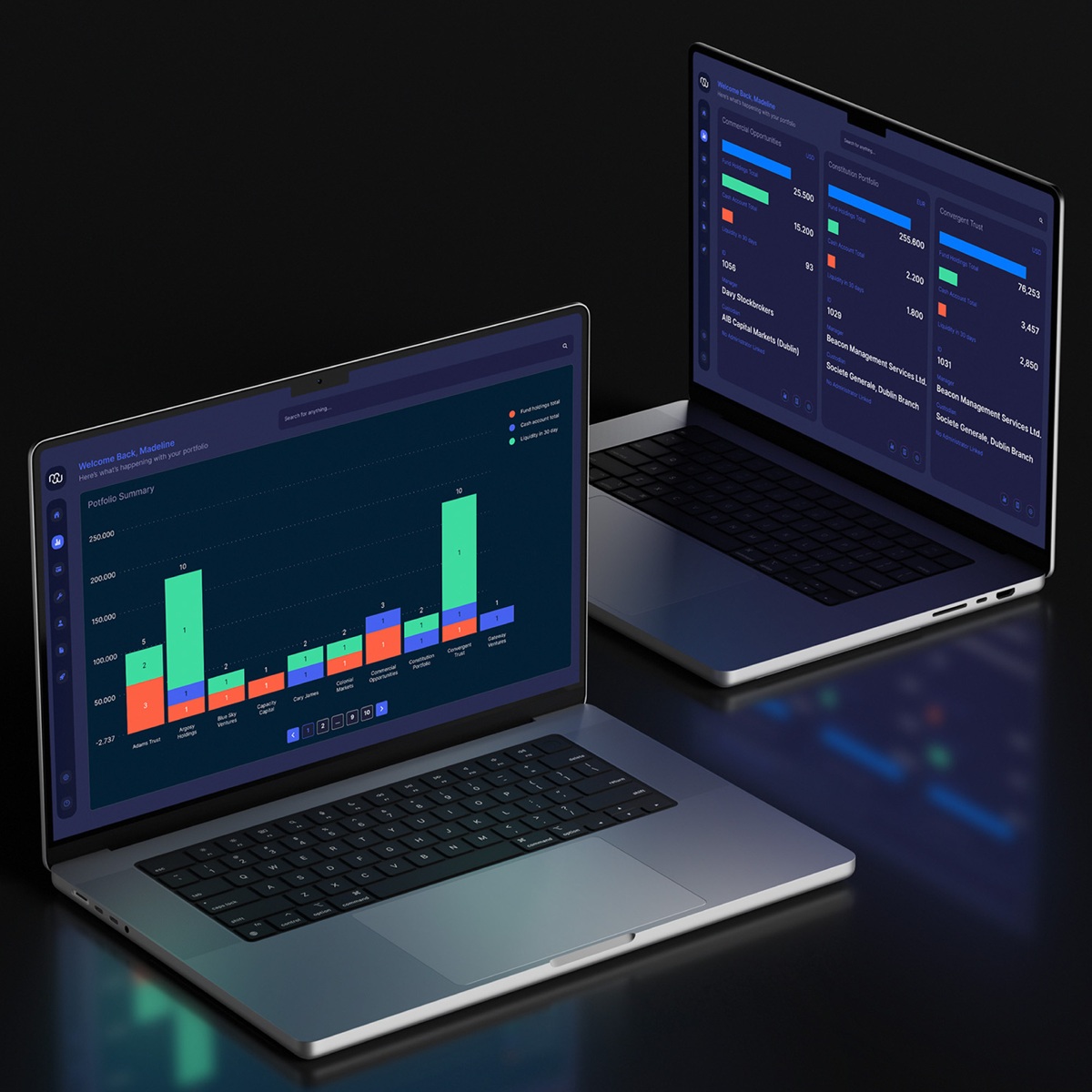At matware we use our tradechain processing technology in combination with our cutting-edge AI to turn complex data into numbers you can rely on, retrieve easily and view just the way you want to see them.
Who
is it for?
Institutional Investors and Family Offices
With hybrid portfolios that combine traditional and alternative assets, matware is used to support the emerging modern portfolio strategies these investors employ. We bring together the liquid and illiquid assets to support a consolidated picture of positions, performance and risk.
Feeder Funds
Handling the challenges of investor exposure and underlying fund exposure at any scale… Supporting both the investor pool and target investment with ease. We support the ability to match assets and liabilities effectively. Our integration of these activities and unique analysis of liquidity management through scenario modelling enhances risk management.
Fund Custodians and Brokers
From generation to routing, matching and execution, orders are seamlessly processed with their own unique terms. We provide the configurable process flows that supports operational risk control, along with insights that enhance efficieny and reduce manual processing errors.
Fund of Funds and Separately Managed Accounts
Portfolio cash and liquidity, performance and exposure. Providing asset managers with the tools to make well informed daily portfolio management decisions. matware institutionalizes the firm with enterprise counterparty connected technology for granular reporting.
Solutions
Portfolio Management
For seamless and intuitive reporting, investing and managing of complex portfolios.
Proven, Enterprise-grade, secure, AI integrated, counterparty connected.


Trade Order Management
matware delivers enterprise TRADECHAIN™ processing for execution-driven portfolio management of private assets.
Liquidity
Investors in alternatives are acutely aware of the complexities of unique investment and withdrawal terms that make managing tradeable cash a nightmare.
matware uniquely provides precise cash availability and projection across portfolios with actionable insight that supports effective trade decisions.

In the numbers
350
+
functions by sector
60
+
reports as standard
60
+
man years in development
Optimizing Investment
Operations
Alternatives Specialists
We structure complex alternative asset terms and activity to deliver intelligent reporting and analysis
Actionable Insights
We deliver reporting that goes straight to the information you need to make decisions and effect processes
Hedge Fund Liquidity
Our unrivalled analysis of investment and redemption terms delivers the most comprehensive insight to support asset allocation
Trade Processing
TRADECHAIN brings together our projection of trading terms, trade flows, operational controls and integration to support effective processes over the challenging or alternative trade order management






